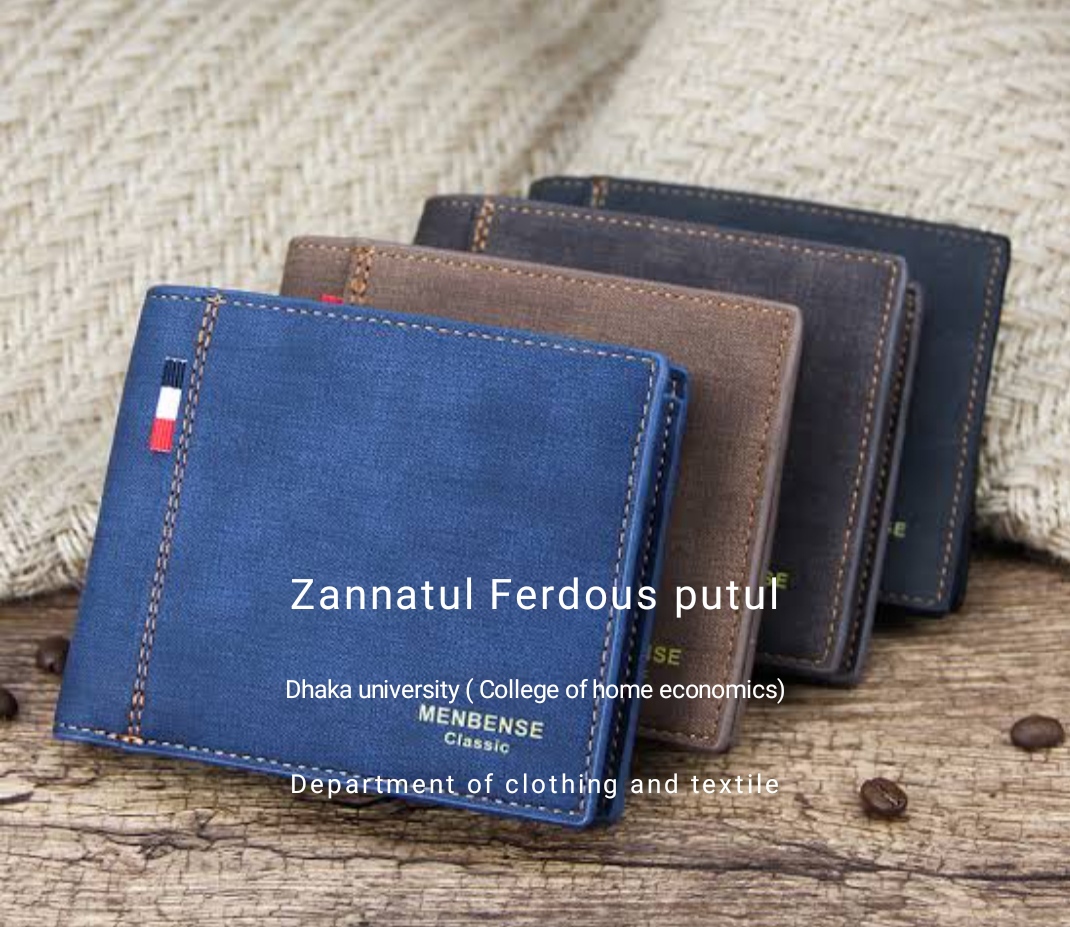wallet is a small, flat case that can be used to carry such small personal items as paper currency, credit cards, and identification documents (driver’s license, identification card, club card, etc.), photographs, transit pass, business cards and other paper or laminated cards. Wallets are generally made of leather or fabrics, and they are usually pocket-sized and foldable.
clips; a coin purse; a chain fastener, strap, or rein; or a zipper. Specialized wallets are designed for holding passports, wearable ID cards, and checkbooks to give some examples. Some unusual wallets are worn on the wrist or shoe. In addition to their practical function, wallets may be used as a fashion accessory, or to demonstrate the style, wealth, or status o
👉 History
Ancient Greece
The classicist A. Y. Campbell set out to answer the question, “What…in ancient literature, are the uses of a wallet?” He deduced, as a Theocritean scholar, that “the wallet was the poor man’s portable larder; or, poverty apart, it was a thing that you stocked with provisions.”[4] He found that sometimes a man may be eating out of it directly but the most characteristic references allude to its being “replenished as a store”, not in the manner of a lunch basket but more as a survival pack.
Renaissance
Wallets were developed after the introduction of paper currency to the West in the 1600s. (The first paper currency was introduced in the New World by the Massachusetts Bay Colony in 1690.) Prior to the introduction of paper currency, coin purses (usually simple drawstring leather pouches) were used for storing coins. Early wallets were made primarily of cow or horse leather and included a small pouch for printed calling cards.[citation needed]
In recounting the life of the Elizabethan merchant, John Frampton, Lawrence C. Wroth describes the merchant as, “a young English-man of twenty-five years, decently dressed, …, wearing a sword, and carrying fixed to his belt something he called a ‘bowgett’ (or budget), that is, a leathern pouch or wallet in which he carried his cash, his book of accounts, and small articles of daily necessity
19th century
A mid-19th century wallet or pouch made of leather.
In addition to money or currency, a wallet would also be used for carrying dried meat, victuals, “treasures”, and “things not to be exposed”. Wallets originally were used by early Industrial Americans. It was considered “semi-civilized” in 19th century America to carry one’s wallet on one’s belt. At this time, carrying goods or a wallet in one’s pocket was considered uncivilized and uncommon.[6]
In Spain, a wallet was a case for smoking paraphernalia: “Every man would carry a small sheaf of white paper in addition to a small leather wallet which would contain a flint and steel along with a small quantity of so-called yesca, being a dried vegetable fibre which a spark would instantly ignite.”[7]
20th century–present
A WW I era wallet and its contents.
The modern bi-fold wallet with multiple “card slots” became standardized in the early 1950s with the introduction of the first credit cards. Some innovations include the introduction of the velcro-closure wallet in the 1970s. Pocket-sized wallets remain popular to this day.
For cryptocurrencies that only exist in cyberspace as entries in some online ledger a “cryptocurrency wallet” is a computing tool whose purpose is to securely keep the owners secret key, authenticate the owner, and let the owner sign transactions securely. A “hardware wallet” is a single purpose computer to do this even more safely.
👉Fashion
Most major designers offer seasonal and perennial wallet collections of black and brown leather. Major retailers also sell a wide selection of men’s wallets, including branded and house-name wallets. Branded wallets may include logos or other trademarks to identify the brand.
👉Materials
The traditional material for wallets is leather or fabric, but many other flexible flat sheet materials can be used in their fabrication. Non-woven textiles such as Tyvek are used, sometimes including reuse of waterproof maps printed on that material. Woven metals, such as fine mesh made of copper or stainless steel have been incorporated into wallets that are promoted as having electromagnetic shielding properties to protect against unauthorized scanning of embedded NFC & RFID tags. Do-it-yourself websites such as Instructables feature many projects for making wallets out of materials such as denim, Kevlar, or duct tape.
👉Regional differences
A Japanese wallet with a coin purse.
Some wallets, particularly in Europe where larger value coins are prevalent, contain a coin purse compartment. Some wallets have built-in clasps or bands to keep them closed. As European banknotes, such as euros and pounds, are typically larger than American banknotes in size, they do not fit in some smaller American wallets.
Warm regards
Zannatul Ferdous putul
Dhaka university (College of home economics Department of clothing and textile)
Batch: 35


